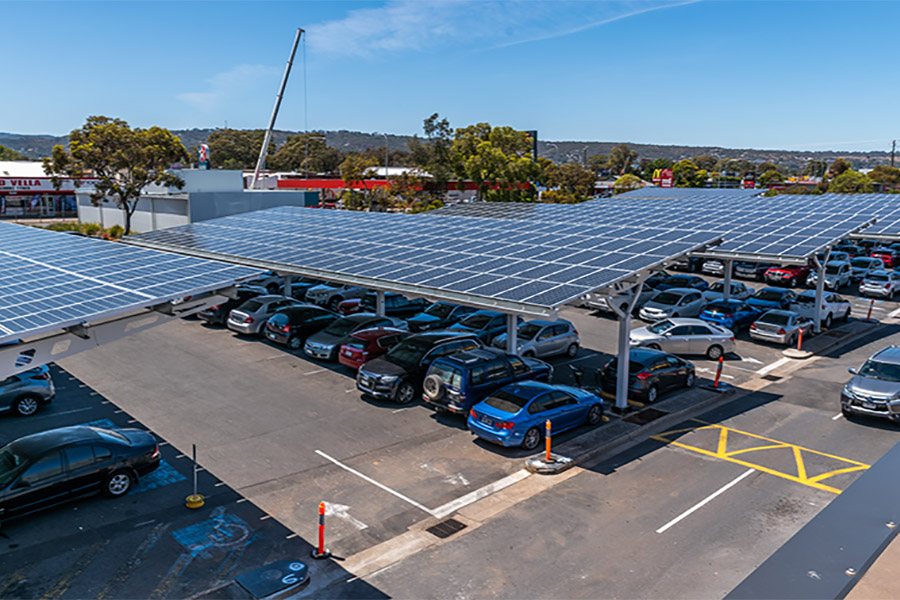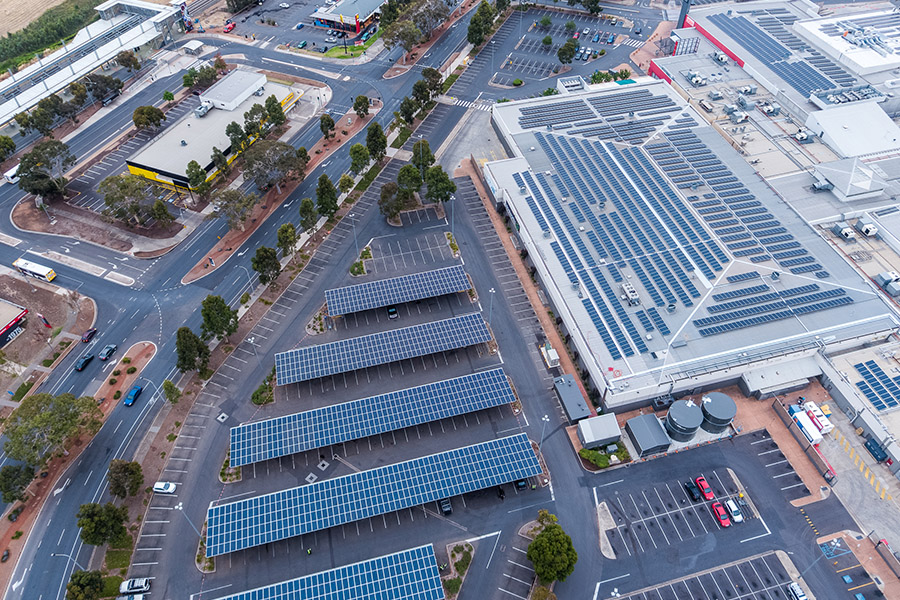Vicinity Centres (Vicinity) has completed Australia’s largest car park solar installation in South Australia (SA), with 1,400 solar shaded car spaces at Elizabeth City Centre (ECC). The project is another completed in line with their $73 million investment in shopping centre solar energy. The car park system is in addition to the 2.7-megawatt (MW) rooftop program which was completed in 2018 and brings the total capacity at ECC to 5.9MW.
Castle Plaza, also in SA, has added more than 430 new solar shaded parking spaces to its existing 1.3MW rooftop solar system, as part of the latest stage of Vicinity’s national solar program, which has generated more than 15GWh of clean, renewable energy, helping power 17 centres across five states.

Castle Plaza creates a sustainable community
More than 12,000 solar panels have been laid across the two car parks, covering approximately 22,000m2 (larger than the field at Adelaide Oval). The projected annual renewable energy generation from both sites in the first year is more than 11.5 gigawatt hours (GWh) – enough to power more than 2,000 average SA homes for a year.
Vicinity’s Chief Strategy Officer Justin Mills said “It’s an incredible milestone for our customers, retailers and our teams who have been patiently watching these projects come to life around Elizabeth City Centre and Castle Plaza. While we’re keeping cars cool over the Summer months, the shades also help power our centres, and we know our customers and communities will welcome the new undercover parking at Elizabeth City Centre and Castle Plaza.”

Elizabeth City Centre’s solar panels cover the whole carpark area
Mills said Vicinity had also begun a trial of a 548kWh Sungrow Samsung energy storage battery at Castle Plaza.
“The Castle Plaza battery was key innovation in our $73 million investment in shopping centre solar and provides an on-site solution for storing and using any of the excess solar energy generated on-site.
“Our commitment to reducing our energy consumption and carbon footprint continues in 2020, when we will introduce four new electric vehicle parking stations across both Elizabeth City Centre and Castle Plaza.
“We’re also helping to create more energy-resilient communities which we see as an important role as we enter summer and the energy demands that come with the hotter months,” Mills said.





















